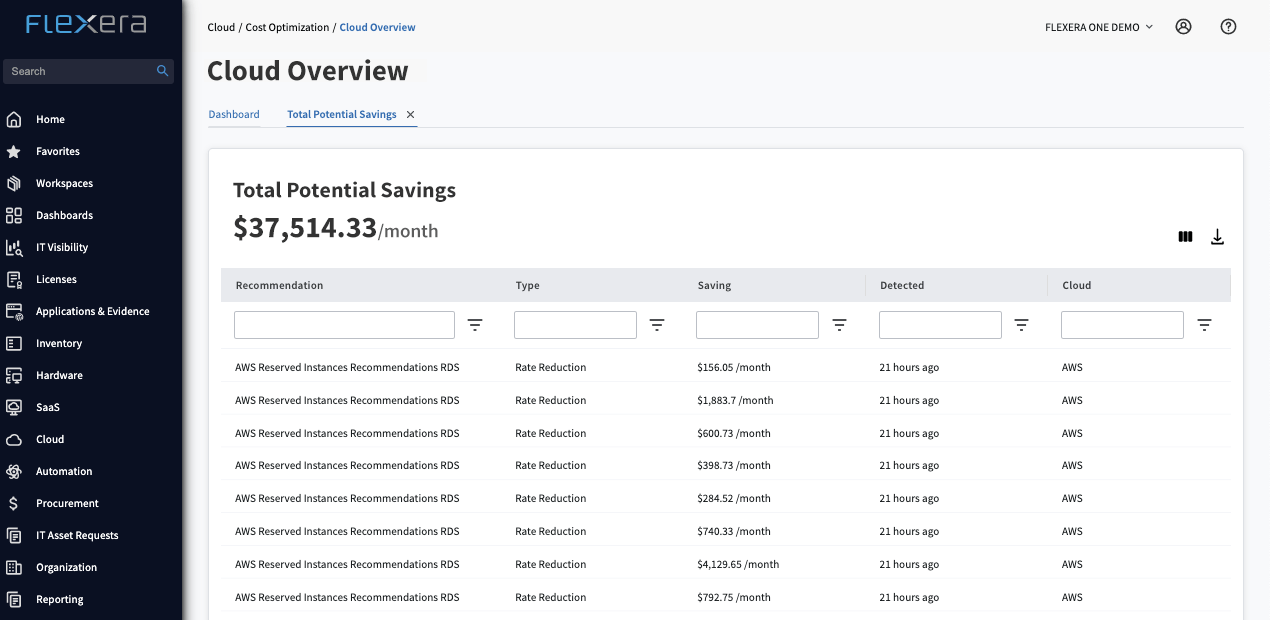Cloud cost optimization
What is cloud cost optimization?
What is cloud cost optimization?
Cloud cost optimization refers to the process of efficiently managing and reducing the expenses associated with using cloud computing resources. Cloud services, offered by providers like Amazon Web Services (AWS), Microsoft Azure and Google Cloud Platform (GCP), allow businesses and individuals to access and use computing resources—such as virtual machines, storage, databases and networking—on a pay-as-you-go basis. While cloud services offer scalability, flexibility and convenience, they can also lead to unexpected costs if not managed properly due to their flexible and on-demand nature.

Cloud cost optimization aims to strike a balance between resource utilization, performance and cost. The overall goal for organizations is to minimize spending while ensuring that the required resources are available to meet business outcomes.
Some best practices for cloud cost optimization include:
- Rightsizing: Choosing the appropriate size of virtual machines or instances for your workloads. Oversized instances can lead to wasted resources, while undersized instances may result in poor performance
- Reserved Instances/reserved VM instances: Committing to longer-term contracts with cloud providers to receive discounted rates on instances or resources. This is suitable for workloads that have predictable usage patterns
- Spot instances/preemptible VMs: Using instances that are available at significantly reduced costs but can be terminated if the provider needs the resources back. This is suitable for fault-tolerant, non-critical workloads
- Resource scaling: Automatically adjusting the number of instances or resources based on actual demand. Scaling up during peak times and down during off-peak times can help avoid overprovisioning
- Resource tagging and categorization: Properly tagging and categorizing resources to understand their purpose and track their costs more effectively
- Usage monitoring and analytics: Using monitoring tools and analytics to gain insights into resource usage patterns and identify areas for optimization
By implementing these cloud cost optimization strategies, you can avoid unnecessary spending, make the most of your cloud resources and maintain better control over cloud budgets without interrupting business objectives.

Common challenges associated with cloud cost optimization
Common challenges associated with cloud cost optimization
While it offers benefits such as cost savings, improved resource utilization and better budget management, cloud cost optimization can come with challenges like understanding complex pricing models, resource visibility issues and the need to balance cost with performance. Proper resource tagging, dealing with changing workloads, and overcoming organizational resistance are also among the challenges faced by organizations taking a DIY approach to cost optimization, especially in complex or hybrid environments.
Can smaller businesses benefit from cloud cost optimization?
Can smaller businesses benefit from cloud cost optimization?
While large enterprises might have more resources to allocate toward cloud expenses, businesses and individuals of all scales can reap the rewards of cloud cost optimization. Small to medium-sized businesses and startups can benefit significantly from cost optimization to meet stricter budget requirements. It’s a practical approach for organizations of all sizes, in any industry to maximize the value of investments in the cloud.
Can organizations optimize cloud costs across multiple providers or hybrid environments?
Can organizations optimize cloud costs across multiple providers or hybrid environments?
Multi-cloud environments benefit greatly from cloud cost optimization, as organizations can compare costs between providers for specific services and choose the most cost-effective option for each workload. The challenge lies in managing different interfaces and billing structures, but third-party cost management tools can help aggregate and analyze spending across providers. In hybrid environments, cost optimization benefits by finding the right balance between resources in both environments.
Benefits of cloud cost optimization include:
- Cost savings
- Improved budget management
- Enhanced resource utilization
- Resource flexibility
- Data-driven decision making
- Scalability without overspending
- Avoidance of cloud sprawl
- Risk mitigation of anomalies and unexpected spend
